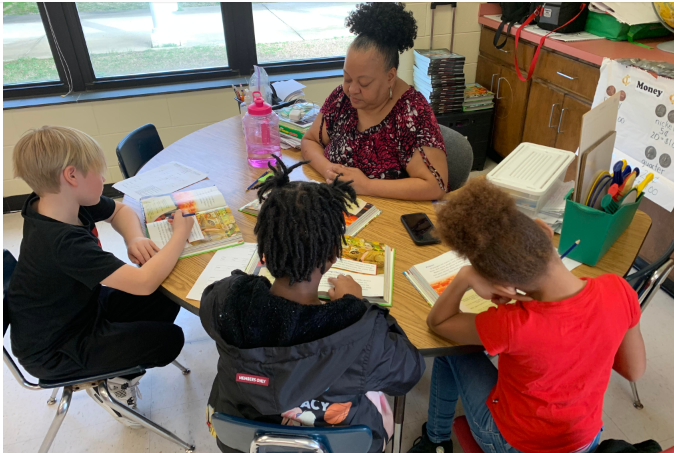-
Grouping Students for Instruction
I. Organization for Instruction
The organization for instruction shall consider the developmental characteristics and instructional needs of the students to be served. The organization for instruction shall be elementary schools (grades K-5), middle schools (grades 6-8), and high schools (grades 9-12).
II. Grouping for Instruction
All students are expected to meet state and local academic performance standards. The district acknowledges that heterogeneous grouping is usually the best means of meeting the educational goals of the board. The district recognizes that students may differ in the amount of time needed or in the instructional methodology that will best assist them in learning the curriculum. If a homogeneous grouping is used, students should be returned to the heterogeneous environment once their needs are met.
If grouping practices (MTSS) are used, the following factors must be considered:
- The individual student's best opportunity for achievement;
- The data-driven skill level of the student;
- The most effective data-driven instructional climate for the student;
- The ages and maturity levels of the students in the group;
- The most effective data-driven instructional climate for the group; and
- The most effective data-driven social climate for the group and the student.
III. Important Information
- Race or sex discrimination will not be tolerated. If homogeneous grouping materially affects diversity, the person proposing such grouping must demonstrate that the benefits of homogenous grouping clearly outweigh the benefits of meeting the board's educational goals of diversity.
- The principal has the authority to assign students to classes (see policy 4155, Assignment to Classes), including the authority to group students for instruction in accordance with this policy. However, the principal should include others in this decision-making process. Thus, the principal may solicit recommendations from teachers and review requests by parents considering homogenous grouping. The principal also may evaluate whether the factors that indicated the need for homogenous grouping still exist.
- This policy is not intended to alter teachers' discretion to group for instruction within classes. Such ad hoc grouping also may be considered as an intervention strategy to improve student performance. However, ad hoc grouping for daily instruction should not result in a students being isolated for a major portion of the school day.

Select a School...
Select a School
- Aurelian Springs Institute of Global Learning
- Enfield Middle S.T.E.A.M. Academy
- Everetts Elementary S.T.E.M. Academy
- Halifax County Early College
- Halifax County Schools Empowerment Zone
- Hollister Elementary Leadership Academy
- Inborden Elementary S.T.E.A.M. Academy
- Northwest Collegiate and Technical Academy
- Pittman Elementary Leadership Academy
- Scotland Neck Elementary Leadership Academy
- Southeast Collegiate Prep Academy
- William R. Davie Middle S.T.E.M. Academy


